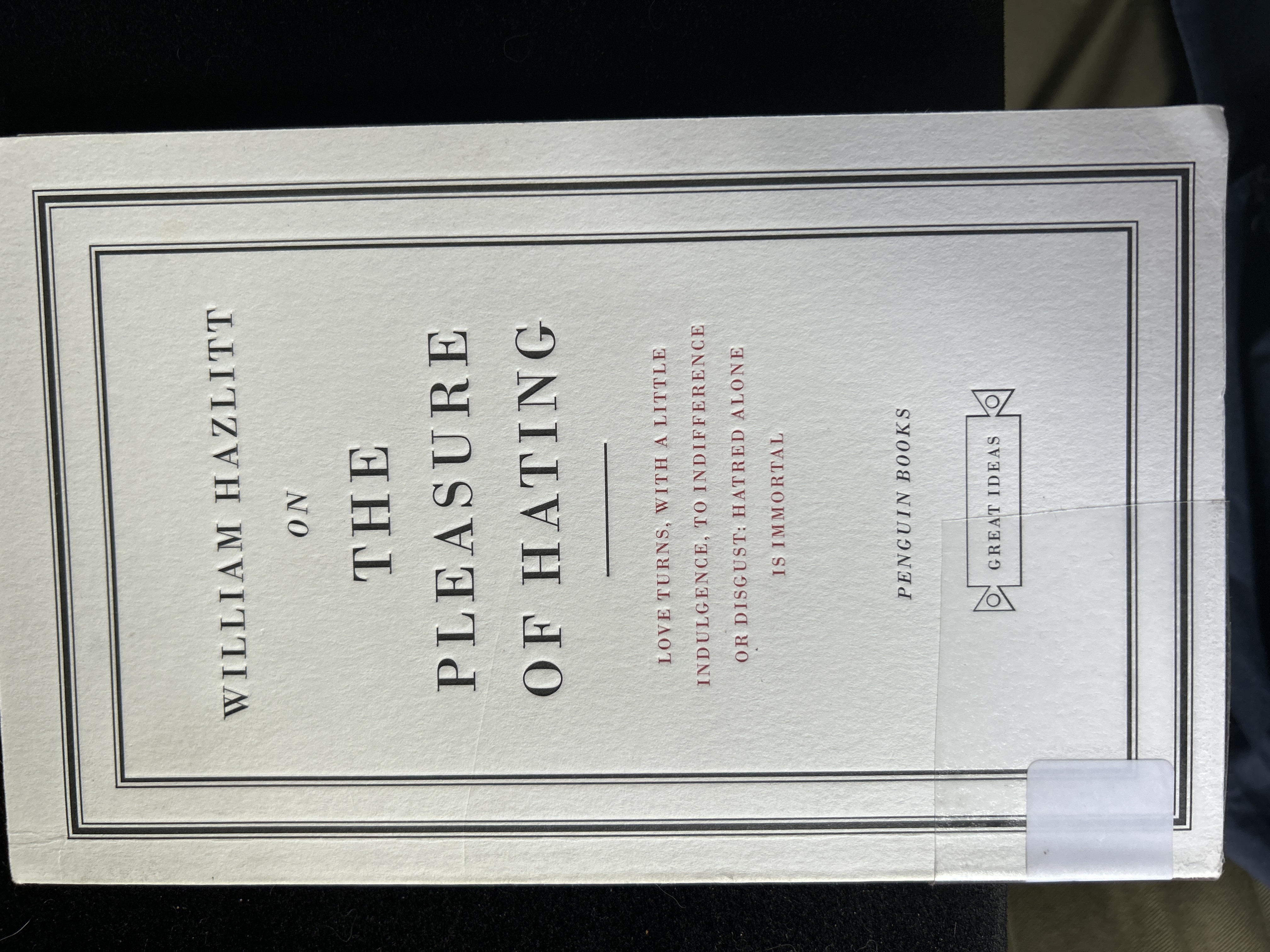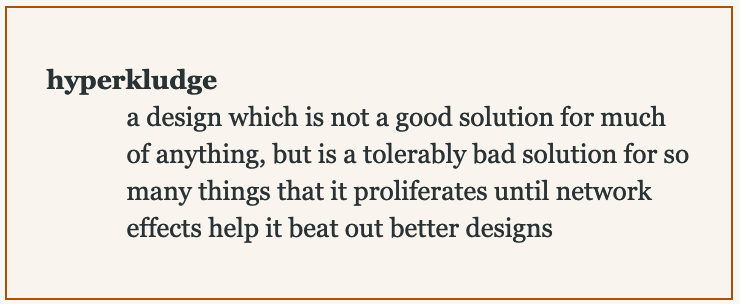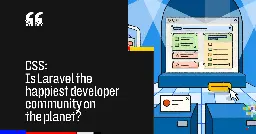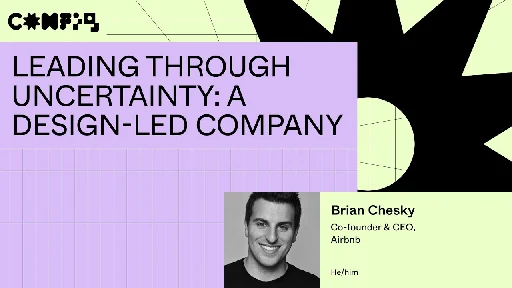
 Steve @awful.systems
Steve @awful.systems I write things on my blog sometimes https://fasterandworse.com/
😅

the woman who is quote tweeting in the twitter screenshot above. I don't want to write her name for search indexing
LB creeps me the f out (sorry, not much else to add)
imagine if actual roadmaps just said "we want to tell you how to get there" "we hate giving you bad directions" "we will make sure you get there at some time in the future"
hay guys, sorry for spam - I just want to shill my videos/audios i'm trying to put out twice a week (I've already done 9!). They are 3-5 mins long and all around one particular theme of tech crit
video versions: https://www.youtube.com/playlist?list=PLwvAAoSdsXWxHwFbULgbpVGiLmJZv4X1g audio versions:
- apple: https://podcasts.apple.com/us/podcast/faster-and-worse/id1792154689
- spotify: https://open.spotify.com/show/62Q7vclARxKjMAOtwXfOIu
- they are also in all the other major podcast platforms. Let me know if you're interested but can't find it.
Let me know if you like it/hate it
oh yeah! That spiral-bound monster was great. I was too young and dumb at the time to actually learn basic but I used to copy the programs from that book into the command line and run them to see what they did. Great memories, thanks!
I remember reading The Stand for the first time. The longest book I'd read before that time was a couple of hundred pages long, so it was a big challenge to tackle a 1000 odd page book. But it is such an amazing book and I breezed through it. It's still my favourite book because of how good it is and because it sparked my appetite for reading.
funny how we went from the "trust machine" blockchain grift to the "could be an acceptable level of trustable machine" ai grift
so the new feature in the next macos release 15.3 is "fuck you, apple intelligence is on by default now"
For users new or upgrading to macOS 18.3, Apple Intelligence will be enabled automatically during Mac onboarding. Users will have access to Apple Intelligence features after setting up their devices. To disable Apple Intelligence, users will need to navigate to the Apple Intelligence & Siri Settings pane and turn off the Apple Intelligence toggle. This will disable Apple Intelligence features on their device.
I love the word, the definition, but I agree with so few of his examples.
I latched on to it because it fit so well with my regular criticisms of tech products, particularly saas shit
yeah that is an interesting example. I immediately applied the term to commercial products. Like Notion for example - funny because I always say Notion takes wikis which are well established in their usefulness and just slaps them into saas product with other things like docs and spreadsheets (also well established in their usefulness) - but he calls wikis themselves a hyperkludge but what superior thing did wikis kill by network effects?
Just want to share this great term & definition "hyperkludge" coined by Jonathan Korman (@miniver on bsky and masto)

I need to write something else on mine. I just have to choose something from my 200 page list of things I'm annoyed about
this is cool. Considering their first album was all songs about accepting death I assume they're not fans of anything tescreal adjacent
I love that album, and i'll never forget when I was dating someone who was a classical pianist, the type that closes their eyes and sways their head when listening to classical, and when I put that album on it was a few notes into the first song and she made this tortured face and said "no, no, no! those chord progressions are so depressing!" It was so strange to me to hear that, but you know how you just know when someone knows what they are talking about and she was sure it had hit some kind of melancholy brown note.
Still... that era of interpol and white lies was great. That shit made me happy
I hear you, but I didn't say flat ui is due to processing power. My line of thought is that a sudden bump in available processing power might prompt designers to feel that elaborate uis are fine now because despite flat ui not being an efficiency thing, it is definitely perceived as one by the average designer who doesn't know how much of the css used to render it is generated client-side via js
yeah but I didn't say that flat ui was created for efficiency. Any efficiency of a flat ui is cancelled out by the excesses of client-side JS. I know it is fashion, I was there. But I also know that there is a sense that it is efficient by the designers that design with it.
that;s exactly the catch I was hoping wouldn't be the case. When the AI shit is abandoned, is the hardware useful for regular stuff...
So, from what you're saying: Generative AI is fucking up in the past, present, and future
is this a possible thing: all the AI assistant stuff being forced onto us in the next gen hardware is gonna need significant computing power bumps to support it, is this creating a potential surplus of computing power in all devices that could time very well with an excessive skeuomorphic UI design response to the decade of bland flatness we've endured that's gonna cook the cpus on the devices of everyone else?
A fundamental attribute of User Experience design is its inability to change the underlying product. The concerns of a UX designer, or r...

I just published this on our new WriteFreely instance. It's a write-directly-into-the-cms-and-hit-publish job that took an hour. It's about the difference between the purpose of a thing and the purpose of the ux designers who work on that thing.
P.S. I skim proof read it. So expect weird gibberish (ha)
sorry, can't let this post go without calling out the greenwashing ecosia that has a chatgpt integration while they only report their own energy stats with a limp "it's too early to tell uwu" when it comes to openai as a provider
Afterwards I was thinking it could also pass as an emo album name. I wonder if there is a good guessing game in "metal album title or emo album title?"
Building his own CCD full-frame mirrorless camera
YouTube Video
Click to view this content.
invidious link https://inv.nadeko.net/watch?v=OkfzjmY9cF8
He has sample photos starting around 12 minute mark - the colour tone he's getting is amazing
Example:
provocation: innovation can't be stifled because innovation is a response to stifles (constraints)
I just want to share a little piece of this provocation, but would like to know how compelling it sounds? I've been sitting on it for a while and starting to think its probably not earning that much space in words. The overarching point is that anyone who complains about constraints imposed on them as being constraints in general either isn't making something purposeful enough to concretely challenge the constraints or isn't actually designing because they haven't done the hard work of understanding the constraints between them and their purpose. Anyway, this is a snippet from a longer piece which leads to a point that the scumbags didn't take over, but instead the environment evolved to create the perfect habitat for scumbags who want to make money from providing as little value as possible:
> The constraints of taking up space
> Software was once sold on physical media packaged in boxes that were displayed with price tags on shelves alongside competing products in brick and mortar stores.
> Limited shelf space stifled software makers into making products innovative enough to earn that shelf space.
> The box that packaged the product stifled software makers into having a concrete purpose for their product which would compel more interest than the boxes beside it.
> The price tag stifled software makers into ensuring that the product does everything it says on the box.
> The installation media stifled software makers into making sure their product was complete and would function.
> The need to install that software, completely, on the buyer’s computer stifled the software makers further into delivering on the promises of their product.
> The pre-broadband era stifled software makers into ensuring that any updates justified the time and effort it would take to get the bits down the pipe.
> But then…
> Connectivity speeds increased, and always-on broadband connectivity became widespread. Boxes and installation media were replaced by online purchases and software downloads.
> Automatic updates reduced the importance of version numbers. Major releases which marked a haul of improvements significant enough to consider it a new product became less significant. The concept of completeness in software was being replaced by iterative improvements. A constant state of becoming.
> The Web matured with advancements in CSS and Javascript. Web sites made way for Web apps. Installation via downloads was replaced by Software-as-a-service. It’s all on a web server, not taking up any space on your computer’s internal storage.
> Software as a service instead of a product replaced the up-front price tag with the subscription model.
> …and here we are. All of the aspects of software products that take up space, whether that be in a store, in your home, on your hard disk, or in your bank account, are gone.
Authors claim they have not been told about the AI deal, were not given the opportunity to opt out and are receiving no extra payment.

> Authors have expressed their shock after the news that academic publisher Taylor & Francis, which owns Routledge, had sold access to its authors’ research as part of an Artificial Intelligence (AI) partnership with Microsoft—a deal worth almost £8m ($10m) in its first year.
On top of it all, that is such a low-ball number from Microsoft
> The agreement with Microsoft was included in a trading update by the publisher’s parent company in May this year. However, academics published by the group claim they have not been told about the AI deal, were not given the opportunity to opt out and are receiving no extra payment for the use of their research by the tech company.
I am a front-end developer who is FED up about front-end development. If you write front-end, this isn't about you personally. It's about how your choices make me angry. Also this is about how my choices have made me angry. Also this is mostly just about choices, the technologies are incidental. Not...

A masterful rant about the shit state of the web from a front-end dev perspective
> There’s a disconcerting number of front-end developers out there who act like it wasn’t possible to generate HTML on a server prior to 2010. They talk about SSR only in the context of Node.js and seem to have no clue that people started working on this problem when season 5 of Seinfeld was on air2. > >Server-side rendering was not invented with Node. What Node brought to the table was the convenience of writing your shitty div soup in the very same language that was invented in 10 days for the sole purpose of pissing off Java devs everywhere. > >Server-side rendering means it’s rendered on the fucking server. You can do that with PHP, ASP, JSP, Ruby, Python, Perl, CGI, and hell, R. You can server-side render a page in Lua if you want.
Is this a thing? UX is the new brand
I just read Naomi Klein's No Logo, and despite being so late to that party It's not hard to imagine how big an impact it had in its time at identifying the brand being the product more than the things the businesses made (*sold).
Because I'm always trying to make connections that might not be there, I can't help think we're at a stage where "Brand" is being replaced by "UX" in a world of tech where you can't really wear brands on your shoulders.
We're inside the bubble so we talk in terms of brands (i.e. openAI) and personalities (sama), which are part of brand really, but outside of the bubble the UX is what gets people talking.
When you think about Slack doing their AI dataset shit, you can really see how much their product is a product of UX, or fashion, that could easily be replaced by a similar collection of existing properties.
As I write this, I already wonder if UX is just another facet of brand or if it's a seperate entity.
Anyway, I'm writing this out as a "is this a thing?" question. WDYR?
Jakob Nielsen is betting it all on gen AI
AI-generated songs: Long vs. short | Combining contributions from 5 AI tools into one design | Jakob live on ADPList this Thursday | Conducting user interviews at scale with AI | Jakob has published 100 articles since May 2023 reboot
This is not so much about a particular post but rather to document Jakob Nielsen's relentless generative AI boosting.
His weekly updates are so saturated with AI subject matter and every image is AI generated they are unreadable and I can only assume the text is AI generated as well. It really doesn't matter if it isn't, in fact, because he's demonstrating in real-time how damaging the AI aesthetic is to a brand.
He also seems to be mentioning his 40 years of expertise a lot more, which might be a reaction to some negative feedback. I want to dig deeper, but I don't like the feeling that I'll have to read generated stuff carefully.
His latest newsletter triggered this post because he links to a terrible AI generated song he made (with the line "Jakob Nielsen with UX fame, forty-one years, still in the game") and spends most of the newsletter talking about the process.
https://www.youtube.com/watch?v=bYt12jr5yUY
Omegle dot com ded
replaced with essay of lament by creator.
My only hot take: a thing being x amount of good for y amount of people is not justification enough for it to exist despite it being z amount of bad for var amount of people.
Marc Andreesen’s techno-optimist manifesto…
We are told that technology is on the brink of ruining everything. But we are being lied to, and the truth is so much better. Marc Andreessen presents his techno-optimist vision for the future.

I don’t really have much to say… it kind of speaks for itself. I do appreciate the table of contents so you don’t get lost in the short paragraphs though
The secret to killing X is a social network for bots to talk to bots
To encourage conversation, Twitter-like platform Pebble—formerly T2—now suggests AI-generated updates for users to edit or post. It's also opening sign-ups to anyone with an account on X.

I think I giggled all the way through this one.
> Pebble, a Twitter-style service formerly known as T2, today launched a new approach: Users can skip past its “What’s happening?” nudge and click on a tab labeled Ideas with a lightbulb icon, to view a list of AI-generated posts or replies inspired by their past activity. Publishing one of those suggestions after reviewing it takes a single click.
> Gabor Cselle, Pebble’s CEO, says this and generative AI features to come will enable a kinder, safer, and more fun experience. “We want to make sure that you see great content, that you're posting great content, and that you're interacting with the community,” he says.
How is it "kinder, safer, and more fun"?
> Cselle says he recognizes the perils of offering AI-generated text to users, and that users are free to edit or ignore the suggestions. “We don’t want a situation where bots masquerade as humans and the entire platform is just them talking to each other,” he says.
> To protect the integrity of the community as it throws open the door to over 300 million people, Pebble will also be using generative AI to vet new signups. The system will use OpenAI’s GPT-3.5 model to compare the X bio and recent posts of people against Pebble’s community guidelines, which in contrast to Musk’s service ban all nudity and violent content.
> Pebble CTO Mike Greer says the aim is to determine “whether someone is fundamentally toxic and treats other people poorly.” Those who are or do will be blocked and and manually reviewed. Pebble intends to vet would-be users against “other sources of truth” online once it opens signups further, he says, to include people without an X account.
-------
There are too many quotable passages, so I'll stop there.
My favourite thing about these products is how they want to take on giants with these differentiating features that would be trivial plug-ins for the giants if they were to pose any threat. It's common in the enterprise blockchain world as well. It'll take SAP much less time to figure out blockchain than it will for your shitty blockchain startup to work out whatever SAP is.
This post describes the Ladybird browser, based on the LibWeb and LibJS engines from SerenityOS.
I found that the SerenityOS project also has a web browser with a completely new set of engines. It looks reasonably capable too.
> Both LibWeb and LibJS are novel engines. I have a personal history with the Qt and WebKit projects, so there’s some inspiration from them throughout, but all the code is new. Not to mention, hundreds of people have worked on the codebase since I started it, all adding their own personal influences, so it’s definitely its own thing.
Edit: Here's a recent interview with the creator Andreas Kling talking to Eric Meyer and Brian Kardell about the browser https://www.igalia.com/chats/ladybird
Edit 2: Here’s their August 2023 update video of the browser https://youtu.be/OEsRW3UFjA0
Edit 3: Looks like the project was recently sponsored $100k USD from Shopify https://awesomekling.substack.com/p/welcoming-shopify-as-a-ladybird-sponsor
It’s quite impressive!
Note: I don't know anything about the politics of the SerenityOS project or the people behind it.
Web Three will succeed if we have to trick you into using it


The decentralised finance club needs to make their core values poster bigger and easier to understand
We’re here in 2023 and they still forget that the core value of “not your keys not your wallet” is the equivalent of putting your cash under your mattress instead of using a bank and the complexity that comes with that is unavoidable.
You can get more people to use a mediocre product/technology by making it easy to use
People will use complex products/technologies if they are useful enough.
But these people can’t make it useful so they keep banging their head against the wall trying to make it more simple.
It is inevitable that they will try the even lazier route of deceiving people into thinking it is simple.
Nitter: https://nitter.net/evanvar/status/1699032296870015232
edit: changed title to reduce keyword matches in lemmy fediverse searches
Holier than thou Gitcoin announce partnership with Shell


I always knew they had it in them, I just thought they'd ease into it a little
https://nitter.net/gitcoin/status/1691092823872073728
"Is Laravel the happiest developer community on the planet?"
How the PHP framework Laravel prioritizes developer experience by focusing on details and avoiding the hype cycle

> Laravel creator Taylor Otwell learned PHP in 2008
and then
> There were a few model-view-controller frameworks for PHP, some of which aimed to provide a "Rails-like" experience. But none was as comprehensive as Otwell wanted. So he built his own and released the first version in 2011.
Taylor Otwell seems like someone who gets design. I've used Laravel a little bit and I know what they mean when they say "opinionated" - but I think the word doesn't do justice to his confidence in his design.
Anyway, this article came up in my twitter feed yesterday and it made me happy to hear Laravel is going strong.
UX and "Human Centeredness" is a grift
Here's Jared Spool talking about knowing who/what you are designing for as if it's a novel idea. This UX influencer opinion that being able to recognise that you're making something for people is some kind of UX skill superpower. Yet they never acknowledge the critical distinction between designing for-profit vs their usual non-commercial case study examples, like this one of a European government ministry.
Commercial design has always been somewhat dumb in how egotistical it is, but we're in a golden age of believing ones own bullshit where people think that UX is a force for good separate from whatever the UXer is being paid to do. In an ad agency, that kind of ignorance was usually isolated to the sales suits who snorted copious amounts of coke to cope with the internal anguish, while everyone else was comfortable with being paid a lot of money to make ads.
https://web.archive.org/web/20230804073453/https://articles.centercentre.com/how-ux-outcomes-make-a-teams-daily-work-truly-human-centered/
Article outline: Design rhetoric analysis "What's good for the user is good for the business"
Feedback types: Is this a thing? / challenging perspectives / general opinions
Here's an outline which I originally posted as a tweet thread but would like to flesh out into a fill article with images like the attached one to illustrate the "zones" that people may/may not realise they are acting in when they say stuff like "what's good for the user is good for the business"
I am writing this because I've published a few things now which say that empathy and "human centeredness" in commercial design, particularly UX design/research, are theatrical and not compatible with capitalism if done deliberately. That means they can be true as a side-effect, or by individuals acting under the radar of their employers. It has become common to hear the good for the user = good for the business response - and I want to write something that demonstrates how it is an incomplete sentence, and any way to add the necessary information to make it true results in the speaker admitting they are not acting in the interests of users or humans.
Here's the basic outline so far:
What’s good for the User
"What's good for the user is good for the business" is a common response I get to my UX critique. When I try to understand the thinking behind that response I come up with two possible conclusions:
Conclusion 1: They are ignoring the underlying product and speaking exclusively about the things between the product and a person. They are saying that making anything easy to use, intuitive, pleasant, makes a happy user and a happy user is good for business.
This type of "good for the user" is a business interest that values engagement over ethics. It justifies one-click purchases of crypto shitcoins, free drinks at a casino, and self-lighting cigarettes. https://patents.google.com/patent/US1327139
Conclusion 2: They are speaking exclusively about the underlying product and the purposes it was created to serve. They say a good product will benefit the business. But this means they are making a judgement call on what makes a product “good”.
This type of “good for the user” is complicated because it is a combination of objective and subjective consideration of each product individually. It is design in its least reductive form because the creation of something good is the same with or without business interests. A designer shouldn’t use blanket statements agnostic to the design subject. “what is good for the user…” ignores cigarette packet health warnings and poker machine helpline stickers there because of enforced regulation, not because of a business paying designers to create them.
It’s about being aware of the context, intent, and whose interests are being served. It means cutting implied empathy for people if it is bullshit.
If we look at this cartesian plane diagram we can see the blue and green quadrants that corporate product design operates in. The green being where the "good for user, good for business" idea exists, and the yellow representing the area that the idea ignores, dismisses, etc
Google should never be allowed to claim they are acting in the interests of an open web
A couple artefacts from my personal pocket of dislike for the company:
Google dot com used table layout components till feb 2022 - something that has been semantically incorrect since forever.
Google's Web.dev, a stealth advertising project disguised as a developer community, has poor accessibility test results—on AXE and it's own Lighthouse test—where developer.mozilla.org scores 100% on Lighthouse and passes with minor issues in AXE tests.
Welcome to MoreWrite!
Hi, welcome to awful.systems' new writing community where we can help anyone who wants to share something more substantial in a blog post or article. I don't think it should matter what the writing is about or if it is fiction, non-fiction, researched academia or an opinion piece. It can help to have some one else look at it.
I am a practising writer who spends a bunch of time obsessing over a post for weeks and then just publishing it out of exhaustion. I've noticed improvements but definitely lacked the kind of feedback that a community like this could offer.
I would suggest that if you do post anything here you specify what kind of attention you would like. For example, are you looking for a critique of your assertions, creative feedback, or an unbiased editorial review?
Discussing your talking points when you just wanted some feedback about the narrative flow can end up having the reverse effect.
Feel free to post things you've already published as well. I don't think the state of the work matters as long as you give context and set expectations.
Thanks, and welcome again!
imagine caring about accessibility and working for this person


I talk a lot about how "empathy" in commercial UX is mostly a posture because in reality capitalism doesn't care, but it's important to consider the additional problem of people in charge who are too shallow to be capable of understanding "why" some people prefer, or need, to do things differently than they do.
This one time I was telling the ceo/founder of a startup I worked for that our react app was making my new macbook pro crawl and we need to fix that because it was a b2b product that would be used by people in finance offices decked out with dell opticrap machines. He responded with surprise "wow, steve. you really care about people don't you?"
I was kinda floored. Anyway, here we are...
https://web.archive.org/web/20230727121010/https://twitter.com/elonmusk/status/1684491212219359232
commercial tech + design is the dumbest cult

YouTube Video
Click to view this content.
Here's Brian Chesky at the Config 2023 conference for Figma, the current designated software for drawing pictures, talking about design at his "design-led company" airbnb.
Brian Chesky went to design school, studied industrial design, and worked as an industrial designer before founding airbnb. They talk to him here as some kind of hero as the only designer ceo in the fortune 500. It's truly sad that this guy is held up as a model for "design" when airbnb does all the things it does.
This cult is based on a reductionist view of design being form alone. Relegating function to being a business and engineering concern.
A room full of UX designers should be grilling the shit out of brian.
From my blog:
> In November 2022, Brian Chesky, CEO of Airbnb, began a tweet thread with “I’ve heard you loud and clear” in response to a customer backlash over the way they hid additional costs till the checkout page. “You feel like prices aren’t transparent…starting next month, you’ll be able to see the total price you’re paying up front” he said about a change that could be made urgently in a day, or carefully over a few.
> When he said I’ve heard you loud and clear he was also telling his User Experience (UX) researchers and designers they were ignored, if they were heard at all. The dark pattern was no mistake. Intentionally designed to deceive and benefit from excited holiday planners and their potential to give in to the sunk cost fallacy. Instead of addressing the ridiculous additional fees the company chose to trick customers into paying them. That’s not empathy, at best it’s apathy, at worst it’s hate. The decision to fix it only came after the balance of business value and public relations started to tip the wrong way. Chesky presented himself as a model CEO doing right by his customers as if he wasn’t responsible for wronging them in the first place. People bought it too. He demonstrated how bright a performative aura of care can shine to hide questions about the business activity or even questions about the business’s legitimacy to exist.
consider this 👆 at the 12:20 mark when the audience applauds him for talking about how design helped them recover from a break-even to a 4bill free cash flow last year - saying they did it by designing the company with "fewer parts, fewer projects" - which probably refers to the ~1900 people they laid off mid-pandemic?